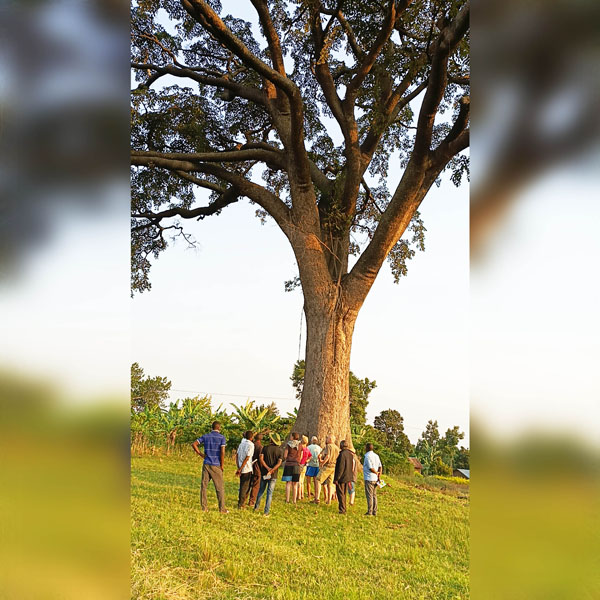The Kibwetere Inferno Site tourism torch point is a deeply evocative destination that offers visitors a poignant and reflective experience, steeped in history and tragedy. This site, infamous for the tragic events that unfolded in the early 2000s, has since been transformed into a place of memory, learning, and preservation. For those interested in history, culture, and the human experience, a visit to the Kibwetere Inferno Site provides an opportunity to delve into a chapter of Uganda’s past that is both harrowing and instructive. The site stands as a testament to the importance of remembering history and preserving the lessons it imparts for future generations. Beyond its historical significance, the site is also an example of the efforts to conserve and protect areas of cultural and historical importance, ensuring that the stories and lessons of the past are not forgotten.
Preserving and Conserving the Kibwetere Inferno Site
 The preservation and conservation of the Kibwetere Inferno Site are central to its mission as a tourism torch point. Visitors to the site can witness firsthand the ongoing efforts to maintain and protect the area, ensuring that it remains a place of remembrance and reflection. The site has been carefully managed to preserve the original structures and artifacts that remain from the tragic event, allowing visitors to gain a deeper understanding of the circumstances that led to the inferno. Preservation activities include the restoration of key buildings and the careful maintenance of the surrounding landscape, which has been left largely untouched to maintain its historical integrity. The conservation efforts also extend to the documentation and archiving of materials related to the incident, including personal accounts, photographs, and artifacts that help to tell the story of what happened. These materials are often displayed in a small museum or exhibition space on-site, where visitors can explore them at their own pace. The preservation of this site is not just about maintaining a physical space—it’s about safeguarding the memories and lessons that the site represents. By visiting the Kibwetere Inferno Site, tourists contribute to the ongoing conservation efforts, helping to ensure that future generations can learn from this dark chapter in history.
The preservation and conservation of the Kibwetere Inferno Site are central to its mission as a tourism torch point. Visitors to the site can witness firsthand the ongoing efforts to maintain and protect the area, ensuring that it remains a place of remembrance and reflection. The site has been carefully managed to preserve the original structures and artifacts that remain from the tragic event, allowing visitors to gain a deeper understanding of the circumstances that led to the inferno. Preservation activities include the restoration of key buildings and the careful maintenance of the surrounding landscape, which has been left largely untouched to maintain its historical integrity. The conservation efforts also extend to the documentation and archiving of materials related to the incident, including personal accounts, photographs, and artifacts that help to tell the story of what happened. These materials are often displayed in a small museum or exhibition space on-site, where visitors can explore them at their own pace. The preservation of this site is not just about maintaining a physical space—it’s about safeguarding the memories and lessons that the site represents. By visiting the Kibwetere Inferno Site, tourists contribute to the ongoing conservation efforts, helping to ensure that future generations can learn from this dark chapter in history.
Reflecting on History: A Place of Memory and Learning
The Kibwetere Inferno Site is more than just a historical landmark; it is a place of deep reflection and learning. As visitors walk through the site, they are encouraged to reflect on the events that transpired here and the broader implications for society. The site serves as a powerful reminder of the dangers of extremism, the importance of critical thinking, and the value of peace and reconciliation. Guided tours are available for those who wish to gain a more detailed understanding of the events, led by knowledgeable guides who can provide context and answer questions. These tours often include visits to key locations within the site, such as the main building where the inferno occurred, the surrounding grounds, and the memorial areas that have been established to honor the victims. The experience is designed to be both educational and contemplative, offering visitors a space to process and reflect on the complex emotions that such a site can evoke. The Kibwetere Inferno Site is also a place of learning, with educational programs and workshops available for visitors of all ages. These programs focus on the historical context of the events, the psychology of cults and extremist movements, and the importance of preserving historical sites as a way of honoring those who suffered. For those interested in deeper learning, the site often collaborates with local schools and universities to provide research opportunities and educational resources. This aspect of the visit adds a layer of intellectual engagement, making the experience not just one of observation but of active learning and critical thinking.
Observing the Area’s Natural Beauty and Tranquility
 While the Kibwetere Inferno Site is primarily known for its historical significance, it is also situated in a location of natural beauty that offers visitors a chance to connect with the landscape. The surrounding area is characterized by lush greenery, rolling hills, and a tranquil atmosphere that stands in stark contrast to the site’s tragic history. This natural beauty provides a peaceful setting for reflection and contemplation, allowing visitors to process the emotional weight of the site in a serene environment. The conservation efforts at the site extend to the natural landscape as well, with initiatives in place to protect the local flora and fauna. Visitors can enjoy guided nature walks that explore the area’s biodiversity, learning about the various plant and animal species that call this region home. These walks offer a unique opportunity to appreciate the natural environment while also considering the broader themes of life, death, and the passage of time. The juxtaposition of the site’s tragic history with its natural beauty creates a powerful experience for visitors, one that encourages a deep connection with both the past and the present. The tranquility of the landscape also makes the site a popular destination for those seeking a quiet place to reflect, meditate, or simply enjoy the peace that nature provides.
While the Kibwetere Inferno Site is primarily known for its historical significance, it is also situated in a location of natural beauty that offers visitors a chance to connect with the landscape. The surrounding area is characterized by lush greenery, rolling hills, and a tranquil atmosphere that stands in stark contrast to the site’s tragic history. This natural beauty provides a peaceful setting for reflection and contemplation, allowing visitors to process the emotional weight of the site in a serene environment. The conservation efforts at the site extend to the natural landscape as well, with initiatives in place to protect the local flora and fauna. Visitors can enjoy guided nature walks that explore the area’s biodiversity, learning about the various plant and animal species that call this region home. These walks offer a unique opportunity to appreciate the natural environment while also considering the broader themes of life, death, and the passage of time. The juxtaposition of the site’s tragic history with its natural beauty creates a powerful experience for visitors, one that encourages a deep connection with both the past and the present. The tranquility of the landscape also makes the site a popular destination for those seeking a quiet place to reflect, meditate, or simply enjoy the peace that nature provides.
Engaging with the Local Community
The Kibwetere Inferno Site is not just a place of historical importance—it is also deeply connected to the local community, which has been integral to the preservation and interpretation of the site. Visitors to the site are encouraged to engage with the local community, learning about their experiences and perspectives on the events that transpired. This engagement can take many forms, from participating in community-led tours to attending local events and ceremonies that commemorate the victims. The local community plays a vital role in maintaining the site, and their involvement ensures that the history of the Kibwetere Inferno is told with authenticity and respect. Many of the guides at the site are locals who have personal connections to the events, offering unique insights and stories that add depth to the visitor experience. Engaging with the community also provides an opportunity to learn about the ongoing impact of the tragedy on the region and the ways in which the community has worked to heal and move forward. This aspect of the visit emphasizes the importance of community in the process of remembrance and reconciliation, highlighting how the past continues to shape the present. By supporting the local community through tourism, visitors contribute to the ongoing preservation of the site and the well-being of those who live in the area. This connection between the site and the community adds a human dimension to the visit, making it a more personal and meaningful experience.
Conclusion
The Kibwetere Inferno Site tourism torch point offers a unique and profound experience that combines history, reflection, and preservation. As a place of memory, it serves as a powerful reminder of the importance of remembering the past and learning from it. The site’s preservation and conservation efforts ensure that this chapter of history is not forgotten, while the natural beauty of the surrounding area provides a tranquil setting for contemplation and reflection. Visitors have the opportunity to engage with the local community, adding a human element to the experience that deepens their understanding of the events and their ongoing impact. Whether you are a history enthusiast, a student of human behavior, or simply someone seeking a place of quiet reflection, the Kibwetere Inferno Site offers a journey into the past that is both educational and emotionally resonant. It is a place where history is preserved, lessons are learned, and the memory of those who suffered is honored in a way that ensures their story will continue to be told for generations to come.









